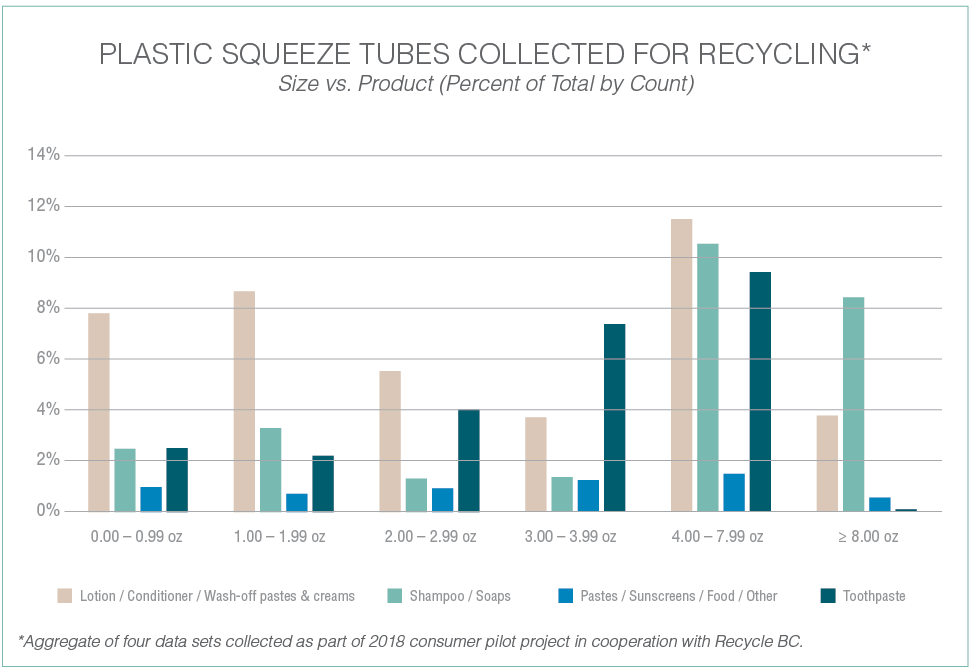More Recycling (MORE), with a core group of stakeholders, is working to address barriers to recycling plastic squeeze tubes. As is the case when adding any packaging format to the recycling stream, initial key steps are to determine the make-up of the material as well as to understand how much is out there in the marketplace. This information can help guide decisions about whether a material should be targeted as a new segregated recycling commodity or if it may flow with an existing commodity.
Based on work to date, MORE estimates that tubes available for recycling would not be greater than 100 million pounds annually in the U.S. and Canada, so finding a suitable commodity they are compatible with is essential to getting them recycled with curbside recycling systems. Current work involves engaging with the value chain to improve compatibility of a majority of the format so that adding tubes to the recycling stream enhances rather than compromises the value of an existing commodity stream, such as colored HDPE bottles.
To understand the details around plastic tube generation and market share, MORE surveyed producers and then conducted a consumer outreach pilot project in partnership with Recycle BC (the stewardship organization that manages residential packaging and paper recycling in British Columbia). In British Columbia, the pilot project team gathered tubes from control communities as well as tubes from the target community, where residents were instructed to recycle tubes with clear direction to “empty tube and replace cap.” MORE sorted the tubes collected and pre- and post-education by product type, size and emptiness. The team then counted each subset of tubes.
The chart below, based on the pilot project research, provides a snapshot of the different tube sizes in the market as well as the types of products they hold. In line with what was seen in generation data from tube producers, the plastic squeeze tubes sorted mostly contained products similar to those seen in bottles (for example, shampoo, soaps, lotion and conditioners) with the exception of toothpaste. The data also shows over 70% of the tubes recycled in the study were greater than 2 ounces in volume, which is an important fact when determining sortability at a materials recovery facility.
To learn more about this project and its progress, please visit RecycleMorePlastic.org/SqueezeTubeRecycling or contact Emily Tipaldo at [email protected].

This story originally appeared in the Winter 2020 issue of Plastics Recycling Update. Subscribe today for access to all print content.

